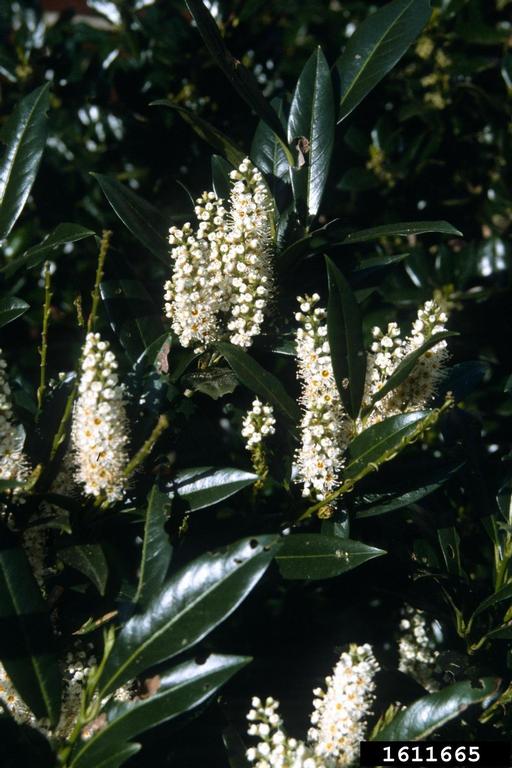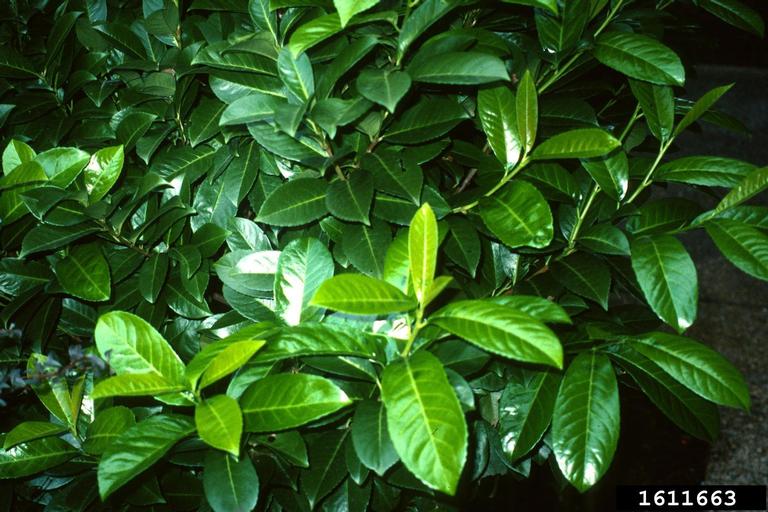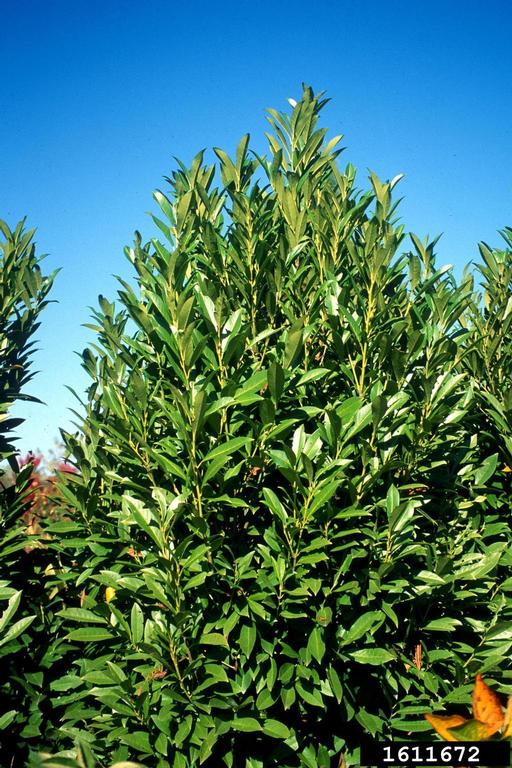English Laurel
Prunus laurocerasus
Plant Description
A large evergreen shrub or tree that can grow from 10-30 ft. Leaves are thick, 3-8 in. long, oblong, pointed at the tip, alternate, and are darker green on top and paler green on the underside. Clusters of small, cream to white flowers. Berries are black when ripe.
Plant Details
| Life Forms | |
|---|---|
| Habitats | |
| ODA Listing | |
| Soil and Moisture Conditions | |
| Suggested Actions | |
| Shade Preference | |
| Mature Height | 10-30' |
| Distribution | Widespread in yards and parks |
| Control | Hand pull small seedlings. For larger plants, cut stems closes to ground and dig out stump and as much roots as possible. For larger infestations, chemical methods are more effective. Always follow all label directions. Replace with Pacific Wax Myrtle or Snowbrush. |
| Disposal Methods | Turn stumps upside down or chip and use as mulch. |
| Reproduction and Spread | Spreads easily via birds. |
| Introduced | Introduced through landscaping trade from southwestern Asia and southeastern Europe. |
| Look Alikes | Other laurels and Ilex latifolia. Somewhat similar to Bay Laurel. |
| Impact | Displaces beneficial native plants. Very poisonous leaves, twigs, and seeds when ingested. Common invader of urban parks and forests. |
| More Info |
© Marion Soil and Water Conservation District. All Rights Reserved.



